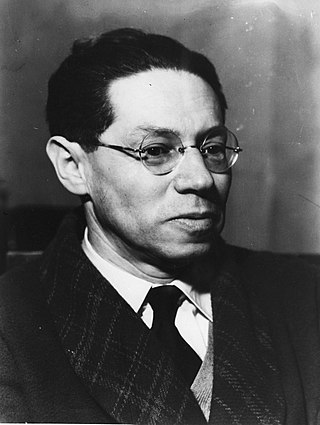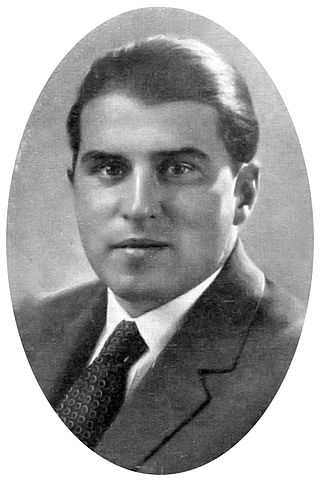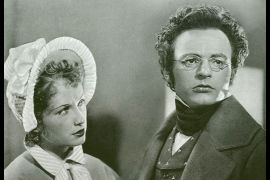
Ernst Theodor Amadeus Hoffmann was a German Romantic author of fantasy and Gothic horror, a jurist, composer, music critic and artist. His stories form the basis of Jacques Offenbach's opera The Tales of Hoffmann, in which Hoffmann appears as the hero. He is also the author of the novella The Nutcracker and the Mouse King, on which Pyotr Ilyich Tchaikovsky's ballet The Nutcracker is based. The ballet Coppélia is based on two other stories that Hoffmann wrote, while Schumann's Kreisleriana is based on Hoffmann's character Johannes Kreisler.

The Order of Friars Minor Capuchin is a religious order of Franciscan friars within the Catholic Church, one of three "First Orders" that reformed from the Franciscan Friars Minor Observant, the other being the Conventuals (OFMConv). Franciscans reformed as Capuchins in 1525 with the purpose of regaining the original Habit (Tunic) of St. Francis of Assisi and also for returning to a stricter observance of the rule established by Francis of Assisi in 1209.

A doppelgänger, sometimes spelled as doppelgaenger or doppelganger is a biologically unrelated look-alike, or a double, of a living person.
This article presents lists of the literary events and publications in 1815.

A Singspiel is a form of German-language music drama, now regarded as a genre of opera. It is characterized by spoken dialogue, which is alternated with ensembles, songs, ballads, and arias which were often strophic, or folk-like. Singspiel plots are generally comic or romantic in nature, and frequently include elements of magic, fantastical creatures, and comically exaggerated characterizations of good and evil.

Lion Feuchtwanger was a German Jewish novelist and playwright. A prominent figure in the literary world of Weimar Germany, he influenced contemporaries including playwright Bertolt Brecht.

The Betrothed is an Italian historical novel by Alessandro Manzoni, first published in 1827, in three volumes, and significantly revised and rewritten until the definitive version published between 1840 and 1842. It has been called the most famous and widely read novel in the Italian language.

Jean Paul was a German Romantic writer, best known for his humorous novels and stories.

Carl Zuckmayer was a German writer and playwright. His older brother was the pedagogue, composer, conductor, and pianist Eduard Zuckmayer.
In German folklore, the figure of the Freischütz is a marksman who, by a contract with the devil, has obtained a certain number of bullets destined to hit without fail whatever object he wishes. As the legend is usually told, six of the magic bullets are thus subservient to the marksman's will, but the seventh is at the absolute disposal of the devil himself.

Wilhelm Heinrich Wackenroder was a German jurist and writer. With Ludwig Tieck and the Schlegel brothers, he co-founded German Romanticism.

Dark Romanticism is a literary sub-genre of Romanticism, reflecting popular fascination with the irrational, the demonic and the grotesque. Often conflated with Gothic fiction, it has shadowed the euphoric Romantic movement ever since its 18th-century beginnings. Edgar Allan Poe is often celebrated as one of the supreme exponents of the tradition. Dark Romanticism focuses on human fallibility, self-destruction, judgement, punishment, as well as the psychological effects of guilt and sin.

Der krumme Teufel, Hob. 29/1a, was Joseph Haydn's first opera. This German-language comic opera in the genre of Singspiel was commissioned by its librettist, leading comic actor Joseph Felix von Kurz. It was forbidden after two acclaimed performances in Vienna due to "offensive remarks in the text", but later revived and probably revised as Der neue krumme Teufel, Hob. 29/1b. The music is lost, though a libretto survives for each version.
Driving Out a Devil is an early one-act farce by the 20th-century German dramatist Bertolt Brecht. It was written in prose, probably in 1919, and was first published in volume 13 of Brecht's Stücke. The play charts the attempts of a self-confident and manipulative Bavarian peasant boy to outwit the vigilant parents of a girl of his village. Ronald Hayman suggests that this play dramatises most clearly Brecht's own ability to influence people.

Heinrich Schweiger was an Austrian film and stage actor who played leading roles at the Burgtheater on the Ring beginning in 1949. Among the plays in which he starred were Schiller's Don Carlos, Shakespeare's Othello and Richard III and Kurt Weill's The Threepenny Opera.

Klaus Dieter Laser was a German actor. Laser's career spanned over five decades, appearing in both German and English-language productions. He achieved recognition for his lead role in the 2009 film The Human Centipede and also starred in the third entry in 2015. On television, he had a recurring role on Lexx from 1998 to 2000.
Manfred Purzer is a German screenwriter and film director. He wrote more than 20 films between 1955 and 1993. In 1974, he was a member of the jury at the 24th Berlin International Film Festival.

Leopold of Alpandeire – born Francisco Tomás de San Juan Bautista Márquez y Sánchez – was a Spanish Roman Catholic professed religious of the Order of Friars Minor Capuchin. His life is not distinguished for spectacular works but rather for the humble and simple life in which he led his life as well as for his kindness – in particular towards the most deprived persons. He spent most of his life in Granada where its people still remember and celebrate him as a model example of Christian life and virtue.
Ralf Kirsten was a German film director and screenwriter. He directed 22 films between 1955 and 1986. His 1984 film Where Others Keep Silent was entered into the 14th Moscow International Film Festival.

Friedrich Wilhelm Heinrich Theodor Hosemann was a German genre painter, draftsman, illustrator and caricaturist.















